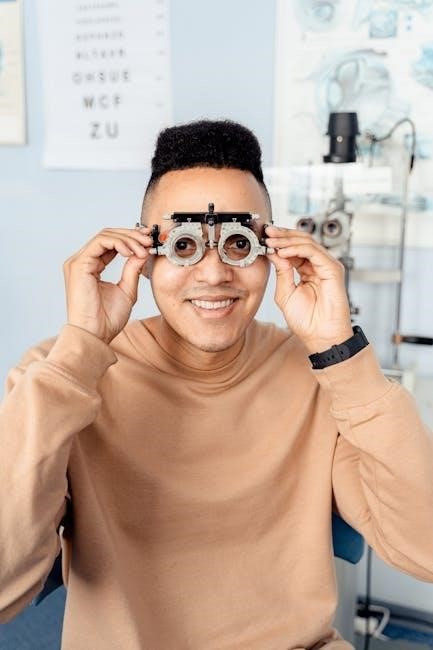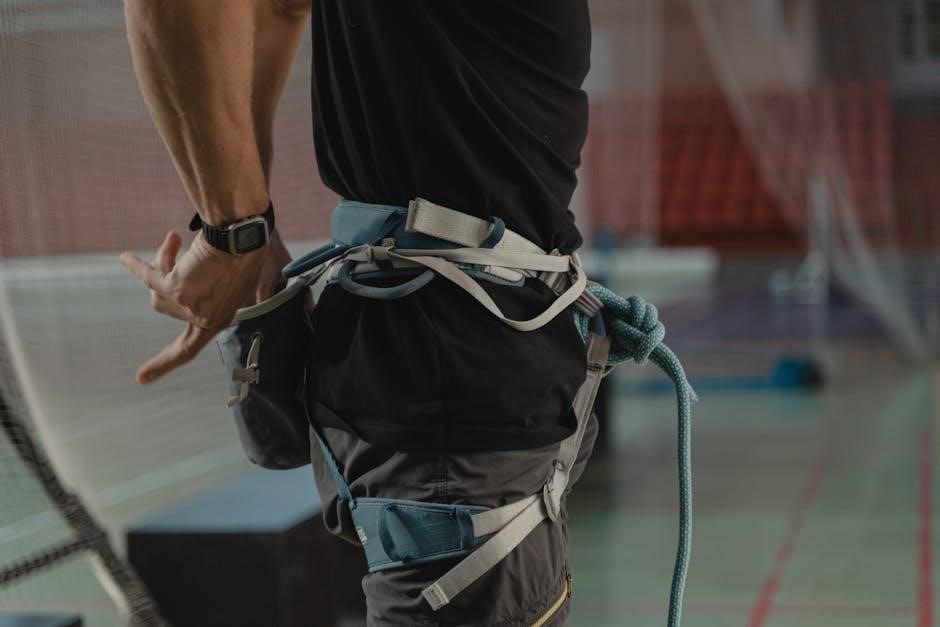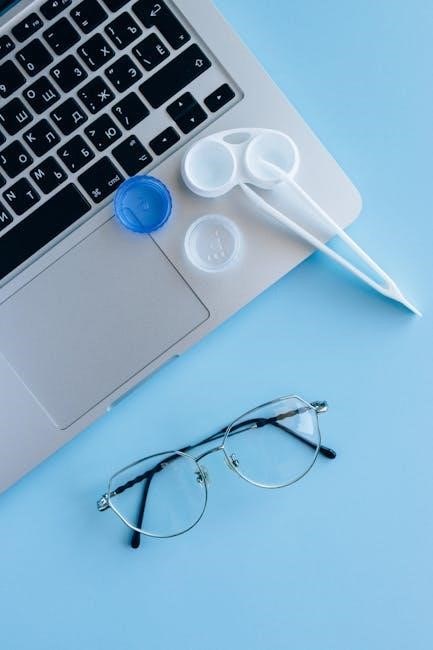Bagel Bites are a popular snack consisting of mini bagels topped with ingredients like cheese, pepperoni, and sausage, offering a convenient and delicious meal option that can be easily cooked in the oven or microwave.
What Are Bagel Bites?
Bagel Bites are bite-sized, pre-made mini bagels topped with ingredients like cheese, pepperoni, and sausage, designed for convenience and ease of preparation. They are typically frozen and can be cooked in the oven or microwave, offering a quick and delicious snack. Each Bagel Bite consists of a small bagel base topped with a variety of flavors, making them a popular choice for both kids and adults; They are known for their portability and simplicity, providing a satisfying snack without the need for extensive preparation. Bagel Bites are also free from high-fructose corn syrup and contain 7 grams of protein per serving, making them a relatively healthy and tasty option for on-the-go meals or casual gatherings.
Popularity and Convenience
Bagel Bites have gained immense popularity as a quick and easy snack, loved by both kids and adults. Their convenience lies in their pre-made, frozen format, allowing for rapid preparation in the oven, microwave, or toaster oven. The inclusion of a microwavable crisping tray in each box further enhances their ease of use, ensuring a crispy texture without extra effort. With flavors like cheese, pepperoni, and sausage, they cater to a wide range of tastes. Their portability and simplicity make them a favorite for busy families, parties, or on-the-go meals. Additionally, Bagel Bites are free from high-fructose corn syrup and offer 7 grams of protein per serving, making them a satisfying and relatively healthy snack option. Their versatility in cooking methods and delicious taste have solidified their place as a beloved snack in many households.
Overview of Cooking Methods
Bagel Bites can be cooked using various methods, each offering distinct results. The oven method provides a crispy texture and is ideal for achieving golden-brown bagels. The microwave, while quicker, results in a softer crust but is perfect for those short on time. For a balance between crispiness and convenience, the toaster oven is a great alternative. Additionally, the air fryer method has gained popularity for producing crispy Bagel Bites with minimal effort. Each cooking method ensures delicious results, catering to different preferences and time constraints. Whether you prioritize texture, speed, or ease, there’s a cooking option available to suit your needs. This versatility makes Bagel Bites a flexible snack for any occasion, ensuring they remain a favorite for both quick meals and casual gatherings.

Oven Cooking Instructions
Preheat your oven to 350°F (175°C). Place frozen Bagel Bites on a baking sheet, leaving space between them. Bake for 10-12 minutes, or until golden brown and crispy.
Preparation Steps
Start by preheating your oven to 350°F (175°C). Remove the desired number of frozen Bagel Bites from the packaging and place them on a baking sheet lined with parchment paper. Ensure the Bagel Bites are spread out evenly, not touching each other, to allow for proper cooking. Avoid overcrowding the baking sheet, as this can prevent even browning. If desired, lightly spray the baking sheet with cooking spray to prevent sticking. Once the oven is preheated, carefully place the baking sheet inside. Bake for 10-12 minutes, or until the Bagel Bites are golden brown and crispy. Keep an eye on them during the last few minutes to avoid overcooking. After baking, let the Bagel Bites cool for a minute or two before serving. For extra crispiness, you can broil them for an additional 30 seconds. Serve warm and enjoy!
Cooking Time and Temperature
Cooking Bagel Bites requires precise time and temperature to achieve the perfect crispiness. For oven cooking, preheat to 350°F (175°C) and bake for 10-12 minutes, or until golden brown. For a crisper texture, increase the temperature to 400°F (200°C) and bake for 8-10 minutes. In the microwave, cook on high for 20-30 seconds per Bagel Bite, adjusting based on your microwave’s wattage. Use the provided crisping tray for even cooking and to prevent sticking. Ensure the Bagel Bites are cooked through but not overcooked, as this can make them dry. Always refer to the package instructions for specific guidance, as cooking times may vary slightly depending on the batch and your appliance’s power level. Proper timing ensures a delicious, evenly cooked snack every time.
Tips for Crispy Texture
Achieving a crispy texture with Bagel Bites is easy with a few simple tips. For oven cooking, bake at 400°F (200°C) for 8-10 minutes to enhance crispiness. Use a baking sheet lined with parchment paper to prevent sticking and promote even browning. In the microwave, place Bagel Bites on the provided crisping tray and cook for 20-30 seconds per piece. To avoid sogginess, avoid overcrowding the tray. For extra crispiness, finish microwaved Bagel Bites in a toaster oven at 350°F (175°C) for 1-2 minutes. Patience is key; overcooking can lead to dryness. Always follow package instructions for optimal results and adjust cooking times based on your appliance’s power. These methods ensure a perfectly crispy exterior while maintaining a soft interior, making every bite enjoyable and satisfying.
Microwave Cooking Instructions
Cook Bagel Bites in the microwave for 20-30 seconds per side using the crisping tray. Adjust time based on microwave power for optimal crispiness and texture, ensuring a quick, convenient snack.
Microwave Cooking Time
Cooking Bagel Bites in the microwave requires precise timing to achieve the perfect texture. For 9 Bagel Bites, cook on high for 1 minute and 30 seconds. Adjust time based on quantity: 20-30 seconds per side for smaller batches. Ensure even cooking by placing them on the provided crisping tray. If unsure, start with the recommended time and check for doneness. Overcooking can make them dry, so monitor closely. For softer bites, reduce time by 15 seconds. Let them stand for a few seconds before serving. This method ensures a quick, convenient snack with minimal effort, though the crust may be softer than oven-cooked bites.
Power Level Adjustments
When microwaving Bagel Bites, adjusting the power level can help achieve the desired texture. Start with 80% power for 1-2 minutes, depending on your microwave’s wattage. Lower power levels prevent overheating and ensure even cooking. If your microwave has a higher wattage (e.g., 1200W), reduce the power to 70% to avoid burning. For lower wattage microwaves, increase the cooking time slightly. Always check the Bagel Bites after the recommended time and adjust as needed. Higher power levels can lead to uneven cooking, so medium to medium-high settings are ideal. For the crispiest results, avoid using the defrost setting. Instead, cook frozen Bagel Bites directly on the crisping tray. Adjusting the power level ensures your snack is cooked perfectly without overcooking or undercooking. Refer to your microwave’s manual for specific guidance on power level customization.
Safety Precautions
When cooking Bagel Bites in the microwave, it’s essential to follow safety precautions to avoid accidents. Always use a microwave-safe plate or the provided crisping tray to prevent melting or fire hazards. Never leave the microwave unattended while cooking, as Bagel Bites can burn quickly. Keep children away from the microwave while it’s in use. After cooking, carefully remove the plate using oven mitts or a towel, as it may be hot. Avoid overheating, as this can cause the cheese to splatter and create a mess. If you notice smoke or a burning smell, stop the microwave immediately. Additionally, ensure the microwave is clean before and after use to prevent food residue from igniting. Following these safety tips helps ensure a safe and enjoyable snacking experience. Always prioritize caution when handling hot foods and appliances.

Health Benefits and Nutrition
Bagel Bites offer a balanced snack option with 7 grams of protein, no high-fructose corn syrup, and low sodium, making them a nutritious choice for quick meals or snacks.
Nutritional Overview

Bagel Bites are a nutrient-rich snack option, providing 7 grams of protein per serving. They contain no high-fructose corn syrup and are low in calories and fat, making them a healthier choice. Each serving offers essential nutrients like fiber, calcium, and iron, supporting overall health. With minimal sodium content, Bagel Bites are a great option for those monitoring their sodium intake. They are also free from trans fat, ensuring a heart-healthy snack. The combination of protein and fiber helps keep you full longer, making them an excellent choice for quick meals or snacks. Their balanced nutritional profile makes Bagel Bites a convenient and nutritious option for families and individuals seeking a tasty yet healthy snack.
Health Benefits of Microwaving

Microwaving Bagel Bites offers several health benefits, primarily due to its efficient cooking method. It preserves nutrients by using dry heat, preventing the loss of water-soluble vitamins and minerals. This quick cooking process retains more nutritional value compared to longer cooking methods. Additionally, microwaving requires no added oil or fat, making it a healthier alternative to frying. The method also ensures food safety by avoiding high-heat exposure and raw meat handling. Furthermore, microwaving helps maintain the texture and shape of Bagel Bites better than other methods, as it heats from the inside out. This ensures a consistent and enjoyable snack without compromising on nutritional integrity. Overall, microwaving is a convenient, nutrient-preserving, and safe way to enjoy Bagel Bites while maintaining their health benefits.
Low-Calorie Snacking Options
Bagel Bites are an excellent choice for those seeking low-calorie snacking options. Each serving contains only 70 calories, making them a guilt-free treat. They are also low in fat, with just 2 grams per serving, and contain no high-fructose corn syrup, aligning with healthier dietary preferences. Additionally, Bagel Bites provide 3 grams of fiber and 6 grams of protein, offering nutritional value while keeping calorie intake in check. Their compact size and pre-portioned servings make them ideal for controlling calorie consumption. Microwaving further enhances their appeal, as it requires no added oils, preserving their low-calorie profile. This makes Bagel Bites a convenient and satisfying snack for health-conscious individuals looking to manage their calorie intake without sacrificing flavor or convenience.

Alternative Cooking Methods
Beyond traditional oven and microwave, Bagel Bites can be cooked in a toaster oven, air fryer, or convection oven, offering alternative ways to achieve crispy, evenly cooked results.

Toaster Oven Instructions
Preheat your toaster oven to 400°F (200°C). Place the frozen Bagel Bites on the oven tray in a single layer, ensuring they are not overlapping for even cooking. Cook for 5-7 minutes or until the crust is golden brown and the cheese is melted. For crispier results, flip the Bagel Bites halfway through the cooking time. Keep an eye on them to avoid overcooking, as toaster ovens can vary in heat distribution. Once cooked, remove and let cool for a minute before serving. This method offers a crispy texture similar to conventional ovens but with faster cooking times. Using a crisper tray can enhance the crunchiness of the bagel crust. Always refer to the package instructions for specific timing adjustments based on your toaster oven’s power. This method is ideal for achieving a perfectly cooked snack with minimal effort and time.
Air Fryer Method

Cooking Bagel Bites in an air fryer is a quick and efficient method that yields crispy results. Preheat the air fryer to 375°F (190°C). Place the frozen Bagel Bites in a single layer inside the air fryer basket, ensuring they are not overcrowded for even cooking. Cook for 3-4 minutes, shaking the basket halfway through to ensure uniform crispiness. The air fryer’s circulating hot air technology helps achieve a golden-brown crust without the need for oil. For extra crispiness, you can increase the temperature to 400°F (200°C) for the last minute of cooking. Keep an eye on them to prevent burning, as cooking times may vary depending on the air fryer model. Once cooked, remove the Bagel Bites and let them cool slightly before serving. This method is ideal for achieving a crispy texture with minimal effort and less oil compared to traditional frying.
Conventional Oven vs. Toaster Oven
Cooking Bagel Bites in a conventional oven versus a toaster oven offers distinct results. A conventional oven provides even heat distribution, ensuring consistent cooking across all Bagel Bites, especially when cooking large batches. Preheat to 350°F (175°C) and bake for 10-12 minutes, or until golden brown. This method is ideal for maintaining uniform texture and flavor. On the other hand, a toaster oven cooks faster due to its compact size and concentrated heat, typically requiring 6-8 minutes at 375°F (190°C). It’s perfect for smaller quantities and achieves a crisper exterior. Both methods yield delicious results, but the choice depends on batch size and desired crispiness. For a quick snack, the toaster oven is more efficient, while the conventional oven is better suited for larger groups or families.
Tips and Tricks
Bagel Bites can be crisped in a toaster oven after microwaving. Use a crisper tray for even cooking. Avoid overcrowding and check frequently for desired crispiness. Perfect snack ready in minutes.
Achieving the Perfect Crisp
Achieving the perfect crisp for Bagel Bites requires attention to cooking methods and timing. For oven cooking, bake at 350°F for 10-12 minutes, or until golden brown. Using a crisper tray in the microwave helps maintain texture. To enhance crispiness, cook in the microwave for the recommended time, then finish in a toaster oven for 1-2 minutes. Avoid overcrowding the plate or tray, as this can prevent even cooking. For extra crunch, pat dry excess moisture before cooking. Check for crispiness by lifting edges; if needed, extend cooking time in short intervals. Properly stored Bagel Bites retain their crispiness better when reheated. Experiment with cooking times to find your ideal texture, ensuring a deliciously crispy snack every time.

Customizing Your Bagel Bites
Customizing Bagel Bites allows you to tailor them to your taste preferences. Once cooked, you can enhance their flavor by adding toppings like cream cheese, jelly, or peanut butter. For a healthier option, try adding vegetables such as diced tomatoes or spinach. Experimenting with different sauces, like marinara or ranch, can also elevate the flavor. If you prefer a crunchier texture, cook them in the oven or toaster oven for a few extra minutes. Additionally, you can sprinkle cheese or herbs on top before cooking for an extra burst of flavor. This versatility makes Bagel Bites a fun and adaptable snack for any occasion. Whether you’re craving something classic or adventurous, customization ensures every bite is uniquely delicious.

Avoiding Common Mistakes
When cooking Bagel Bites, it’s important to avoid common mistakes for the best results. Overcooking is a frequent issue, leading to dry, tough bites. To prevent this, stick to the recommended cooking times and keep an eye on them, especially in the microwave. Undercooking can result in a soft, unappetizing texture, so ensure they’re heated through properly. Another mistake is not using the crisping tray provided, as it helps achieve a crunchier texture. Additionally, overcrowding the cooking surface can cause uneven cooking, so arrange them in a single layer. For microwaving, avoid using high power levels, as this can cause burning. Lastly, don’t forget to let them cool slightly before serving to avoid burns. By following these tips, you can enjoy perfectly cooked Bagel Bites every time.
Storage and Shelf Life
Bagel Bites should be stored frozen until ready to eat. Check expiration dates and look for signs of spoilage like mold or discoloration before cooking.
Proper Storage Techniques
Bagel Bites should be stored in the freezer at 0°F (-18°C) to maintain their quality and texture. Keep them in their original packaging or transfer to an airtight container or freezer bag to prevent freezer burn. Always check the expiration date on the packaging before storing. Avoid exposing the bagels to temperature fluctuations, as this can affect their consistency. For optimal freshness, use within 3-4 months of purchase. If you notice any signs of spoilage, such as mold, discoloration, or an off smell, discard the product immediately. Never refreeze Bagel Bites after thawing, as this can compromise their taste and texture. Proper storage ensures your Bagel Bites remain delicious and ready to cook whenever you crave them.
Signs of Spoilage
Bagel Bites, like any frozen food, can spoil if not stored properly. Check for visible signs such as mold, slimy texture, or discoloration on the bagels or toppings. If the packaging is damaged or torn, the product may be compromised. An off smell or sour odor is another indication of spoilage. Always verify the expiration date on the packaging before consumption. If the Bagel Bites have been stored improperly or left at room temperature for too long, they may develop freezer burn, which appears as white or grayish spots. Never consume Bagel Bites that show any of these signs, as they can pose health risks. If in doubt, it’s best to discard the product to ensure safety and quality.
Freezing and Reheating
Bagel Bites are designed to be stored in the freezer to maintain their quality and freshness. When freezing, ensure they are kept in an airtight container or their original packaging to prevent freezer burn. For reheating, frozen Bagel Bites can be cooked directly in the microwave or oven without thawing. If you prefer a crisper texture, reheating in the oven is recommended. Microwave reheating is quicker but may result in a softer texture. To reheat, place the desired number of Bagel Bites on a microwave-safe plate and heat for 20-30 seconds per side. For oven reheating, preheat to 350°F (175°C) and bake for 5-7 minutes, or until crispy. Always check for any signs of spoilage before reheating, such as mold or an off smell. Proper freezing and reheating ensure Bagel Bites remain delicious and safe to eat.




















